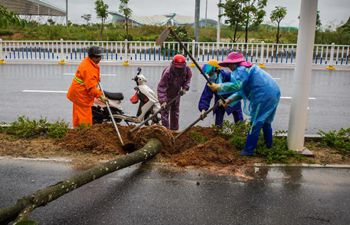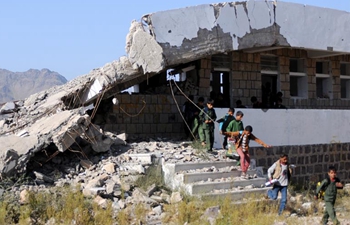WASHINGTON, Oct. 16 (Xinhua) -- "I feel like this is like groundhog day," Canadian development expert John McArthur on Monday said at a seminar focusing on world food security, borrowing a film title which describes a forever repeating day.
"The fact that we have to sit here year after year to talk about this issue makes me want to pull my hair out," McArthur, a senior fellow at Brookings Institution, voiced his frustration at the World Food Day event.
"The world is off track to meet its own goal of ending hunger by 2030," said a Brookings report released over the weekend. The report took a look at the progress the world is making on ending hunger and reached the conclusion that "the goal is slipping further from view."
"Just over two years ago, the international community committed to ending hunger...since then, there have been a few individual successes and reforms," the report said.
Statistics from the United Nations Food and Agriculture Organization (FAO) supported the report's analysis, indicating that the number of undernourished people in the world increased in 2016, from 777 million to 815 million.
The share of undernourished population has increased for the first time since 2002 to 11 percent from 10.6 percent.
The World Food Program (WFP) points to parts of Africa, namely Somalia, South Sudan and Nigeria, as countries most vulnerable in the face of food shortages, saying that 20 million people living there are on the brink of famine. Yemen was also cited.
In addition to the stagnating effort to reduce hunger, the Brookings report also warned of dwindling resources dedicated to the effort.
The Agricultural Orientation Index (AOI), which measures how much governments prioritizes agriculture in their budgets, has registered a fall in recent years, the report found.
For all developing countries, the AOI dropped from 0.4 in 2008 to 0.26 in 2015. In Sub-Saharan Africa, the figure has dropped from 0.23 to 0.13, proving that governments have been disproportionately shifting their budgetary priorities away from agriculture.
While countries such as Peru, Brazil, Bolivia, Vietnam and Thailand are spending more than the minimum to sustain food and nutrition safety, significant deficits are seen in other developing countries, including populous countries such as India, Egypt and Pakistan.
Experts attributed inaction by governments and a lack of a clear action plan, and also pointed to ineffective agriculture policies in some parts of the world.
Global organizations should provide specific plans to political leaders, McArthur said. "But many times a clear action plan failed to be presented to governments," he said.
Paul Winters, a food expert at the International Fund for Agriculture Development, said that agriculture policies sometimes put too much emphasis on staples, such as rice or corn.
"In order to eliminate poverty and boost nutrition, more resources should be poured into other crops," he told the seminar.

















